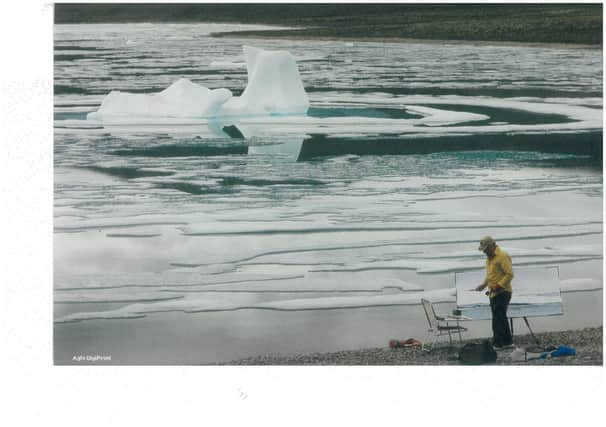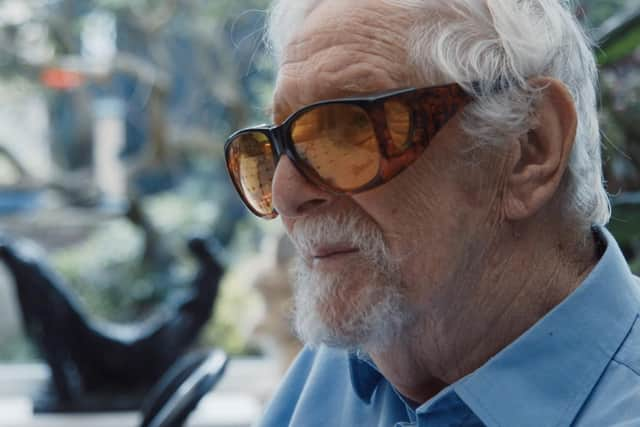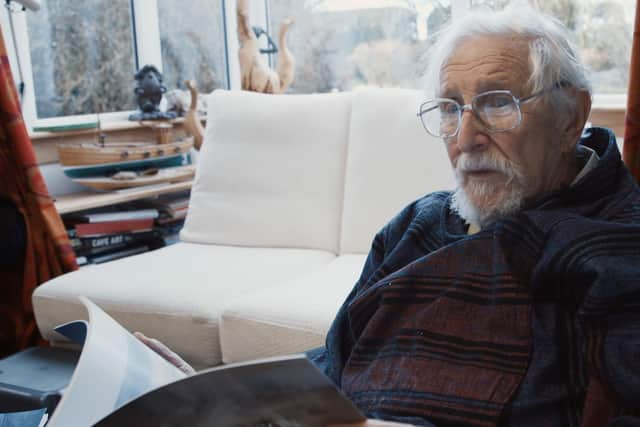New film to explore how Scottish artist's work has documented climate change impact in Arctic


Now a new documentary is to paint a portrait of James Morrison himself as he battled failing eyesight and declining health in his final two years when he was affected by dementia.
Eye of the Storm, which will premiere during the Glasgow Film Festival in March, will examine how Morrison documented the impact of climate change in the Arctic during several trips there and recall his personal fascination with changing landscapes in Scotland.
Advertisement
Hide AdAdvertisement
Hide AdThe artist agreed to be filmed by documentary maker Anthony Baxter, a fellow native of Montrose, after Morrison saw his award-winning documentary, You’ve Been Trumped.
It followed a campaign by local residents to try to thwart Donald Trump’s plans to create a golf course on a protected stretch of Aberdeenshire coastline.
Baxter said he believed the work produced by Morrison, who died in August aged 88, will be of international interest because of his fascination with “threatened or disappearing” landscapes.
Born in Glasgow in 1932, Morrison studied at the city’s art school and was a founder of the “Glasgow Group" of artists.
Morrison and his wife moved to Catterline, in Aberdeenshire, and befriended a number of local artists, including Joan Eardley, although he made regular trips back to Glasgow to paint its tenement buildings and streets.
After seven years, the couple relocated to Montrose to allow Morrison to take up a teaching post in Dundee.
He began to paint the local Angus landscapes in the 1970s and the following decade began painting in the north-west Highlands.
Advertisement
Hide AdAdvertisement
Hide AdHis first visit to the Arctic came about after he met a biologist, Dr Jean Balfour, who suggested he should paint there, inspiring what many critics regard as the finest work of his career.
Baxter said: “James wrote me a very nice letter after watching You’ve Been Trumped. When we met him, he instantly started telling stories about his life.


"He talked about how his eyesight was very problematic and had stopped painting for a bit because he was getting so frustrated. I asked him if I could film him if he started painting again and he was open to the idea.
“James was well known in Scotland by people familiar with art, but my feeling was that his work deserved to reach a larger audience, well beyond these shores.
“He was was very humble about his skills, which was part of his appeal. He was quite self-effacing. He would never really sell himself or his art.
"He kept a very good diary of his trips to the Arctic and could recount them very well. The landscapes that he painted there don’t exist in the form that they did when he painted them. He was essentially a documentarian of the landscape. He was meticulous.


"I felt his work had a really important significance now, when there is so much interest in the Arctic and the melting ice cap. He was out there painting these landscapes because he knew they were threatened or disappearing. He was very much ahead of the time.”
Advertisement
Hide AdAdvertisement
Hide AdJohn Morrison, the artist’s son, said: “His interest in climate change was really stimulated by going to the Arctic four times. He was really hooked on it the first time he went there.”
A message from the Editor:
Thank you for reading this article. We're more reliant on your support than ever as the shift in consumer habits brought about by coronavirus impacts our advertisers.
If you haven't already, please consider supporting our trusted, fact-checked journalism by taking out a digital subscription.
Joy Yates
Editorial Director
Comments
Want to join the conversation? Please or to comment on this article.